Can You Identify 9 Traditional Blue and White Pottery Patterns from around the World?
Let’s see!
What’s your Blue and White IQ? These days blue and white pottery has been reinvented in many forms, every season taking on a new trendy design, originating from the traditional designs of cultures around the world. Why is this cobalt blue dye used in so many countries? It was originally developed in Persia, but in the 14th century was imported by the Chinese and widely used to decorate porcelain dinnerware. From there it moved into Islamic countries, then Japan, then finally Europe where we see many blue and white decorative porcelain today. Although all of these countries have now been using the cobalt pigment for centuries, the decorative motifs defining each culture are distinctly different.
These days in America we tend to group them all together when we say “blue and white” pottery, and decorate our homes with faux ginger jars and dinnerware from Williams-Sonoma. While I am perfectly pleased to see any blue and white pottery in any home, doesn’t it interest you to know where the decorative motifs originate from? Maybe you can look at your own collection and identify the distinct design patterns of each country!
Take my short matching quiz to see if you can identify which of the following plates is from the 9 countries (and one trick!) below. You will not only become a much more informed shopper but you will definitely know what to look for when searching for authentic textiles. Scroll down for the answers (no peeking!) and for notes on the origins of each textile and how to identify it.
Game on!
Blue and White Pottery Samples
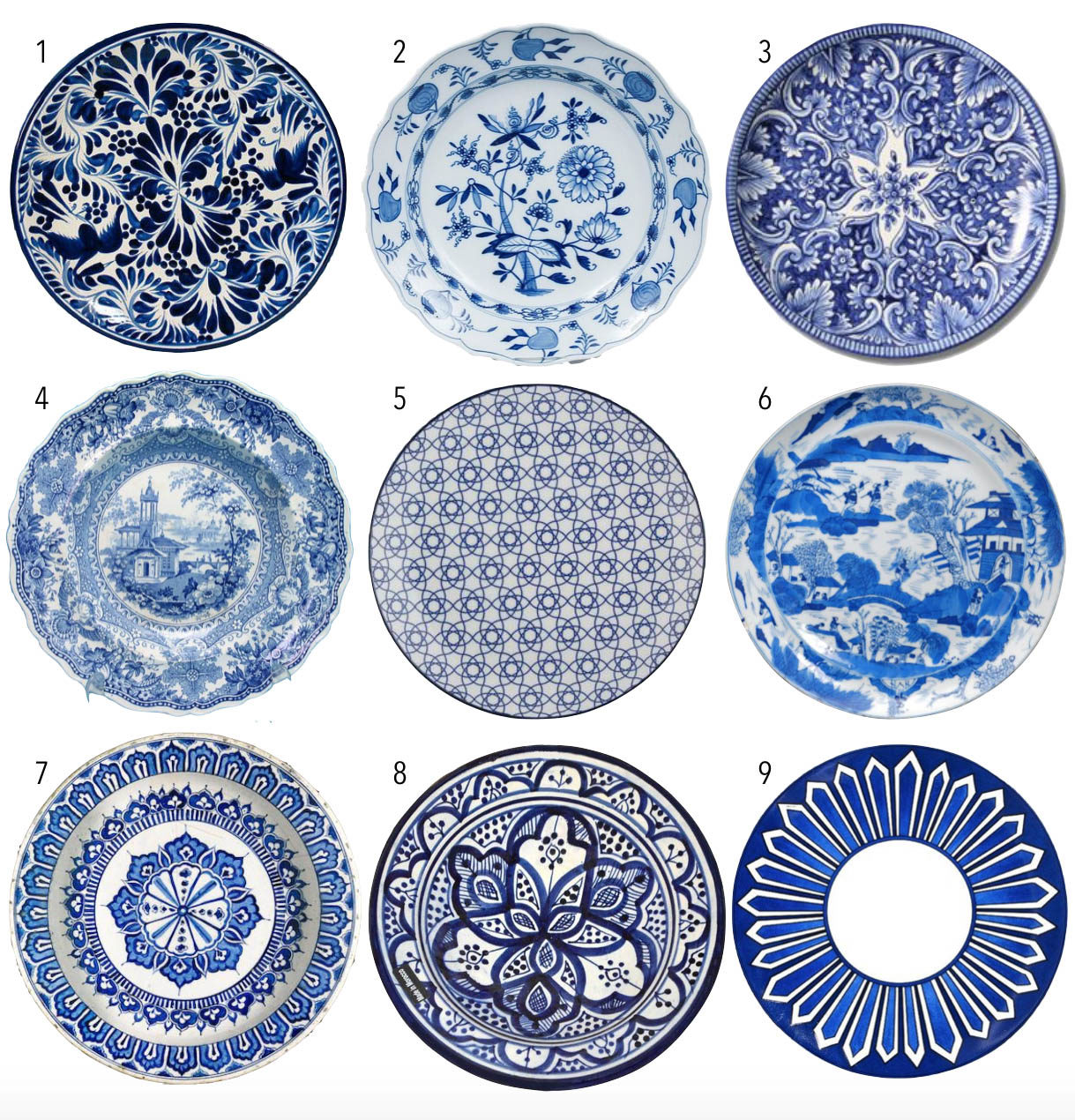
Countries (In no particular order)
A. England
B. China
C. Turkey
D. Mexico
E. Morocco
F. Japan
G. Hermés (Not traditional- But modern day French!)
H. Czech Republic
I. Portugal
How do you think you did? Were you able to nail all 9 plates? Were there any that tripped you up? Here we go with the answers…
>>>>>>>>>>>>>>>>>>>>>>>>>> <<<<<<<<<<<<<<<<<<<<<<<<<<
1.D
Mexican Talavera plates are distinctly Mexico, often drawn with thicker lines and punctuated with numerous petals and dots. The cobalt used is heavier and high contrast, and often features a bold rim, numerous petal like shapes mimicking flowers, and otomi-like animals.
2.H
Blue and White pottery from the Czech Republic/ Slovakia and this region of the world tend to have a lighter hand and leave more white space on the porcelain. The floral and vegetal motifs are delicate and simple, although the plate shape or design may feature a scalloped or more detail edging.
3.I
A Portuguese style blue and white pattern will again more ornate and much heavier in hand, but will also feature more details and shading within the designs. Again the patterns are mostly abstract floral, in a concentric circle design.
4.A
Probably the most distinctive of all of the countries, English blue and white pottery is the most precise of all. Remember that they were inspired by the wide adoption and painting of the Chinese, so these plates depict very elaborate and detailed pastoral scenes of everyday life. They are also often seen with scalloped edges and tend to have a ‘right side up’ because of the distinct scene.
5.F
This one should have tricked you! Japanese motifs can be very similar to the Chinese as well, but most often in Japanese markets historically and today, you will see more geometric or repetitive designs throughout the plates. If you remember learning about Shibori in this quiz, the Japanese are really the pioneers of symmetry, small repeated shapes and geometry in their designs, which makes them very distinct.
6.B
Ah we’ve finally come to the Chinese, who really pioneered this art form for the rest of the world. Although most often depicting more traditional Chinese pastoral scenes (in which the architecture looks very different from the English!), they can also be seen with lotus flowers, fish, chinese characters and other signs of good luck and prosperity, which is often what is painted on ginger jars and more household items.
7.C
Turkish and Moorish designs tend to be quite easy to identify as they often use Arabic or other native writing on their plates. However, this design features a commonly scene symbol on repeat, the arched doorway, which is an extremely common motif in Muslim design and architecture.
8.E
Possibly my most favorite, Moroccan blue and white pottery is also easy to identify. It is a cross between the heavy hand of the Mexican Talavera style painting with the Portuguese floral motifs. Almost all traditional Moroccan pottery looks something like this plate above. The high contrast lines, use of dots, and central outward flowing floral pattern are all distinctive to this part of the world. What’s not distinctive? The color! You can find plates like this in almost any hue in any market in Morocco.
9.G
Finally, we’ve come to another trick. Not ‘traditional french’ by any means, but definitely a handmade heirloom! The Hermés fine china set is serious art form to behold, and if you are lucky enough to ever eat off one of these, please give me a holler and let me know. We used to sell them at a store I worked at here in San Francisco, and they really are a gorgeous addition to any table. While of course they will set you back a few shekels, the concentric and complementary designs are a geometric dream to behold!
>>>>>>>>>>>>>>>>>>>>>>>>>> <<<<<<<<<<<<<<<<<<<<<<<<<<
A small note!
While every culture may have a distinct design style, we all know that inspiration comes from everywhere, and often it’s those that came before us. It’s in this vein that you might see Ming dynasty plates with arabic scripture on them, Japanese plates with Chinese fish, Scandinavian plates with Japanese geometry, and Turkish hand painting that resembles the Czech. It is hard to identify one single design style for each artist has their own take on a trend (even at the time!). However being able to recognize common themes will make you a more informed shopper the next time you are at Home Goods and snapping up a few of their ginger jars!
More examples of pottery to identify (now that you are an expert!)
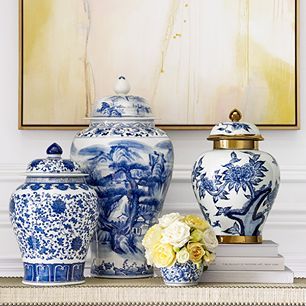
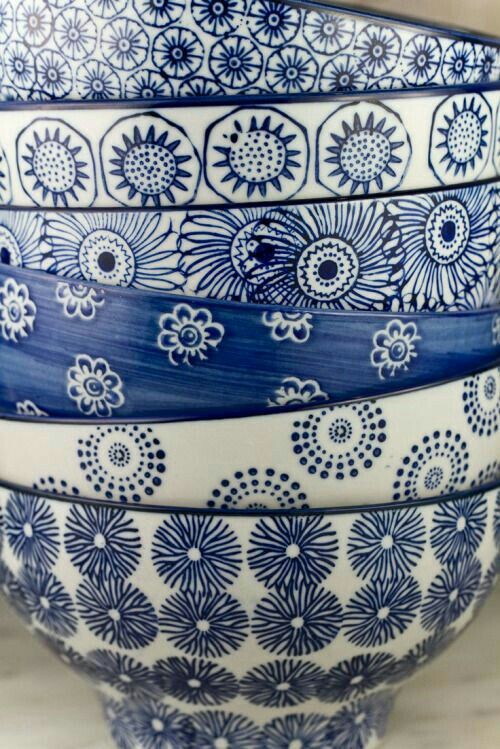
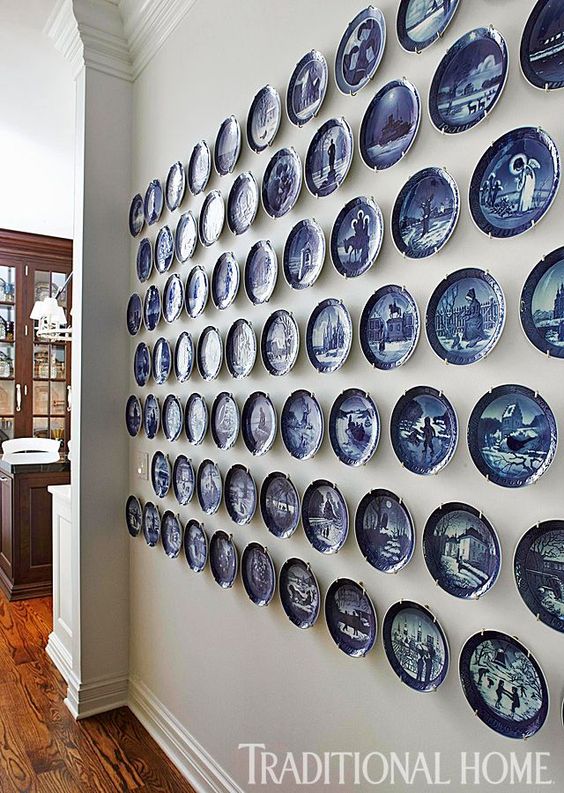
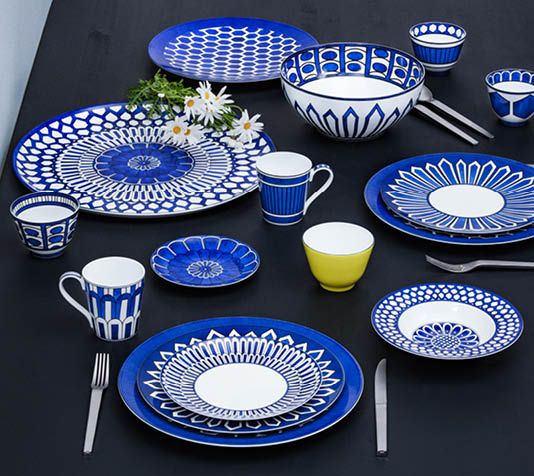
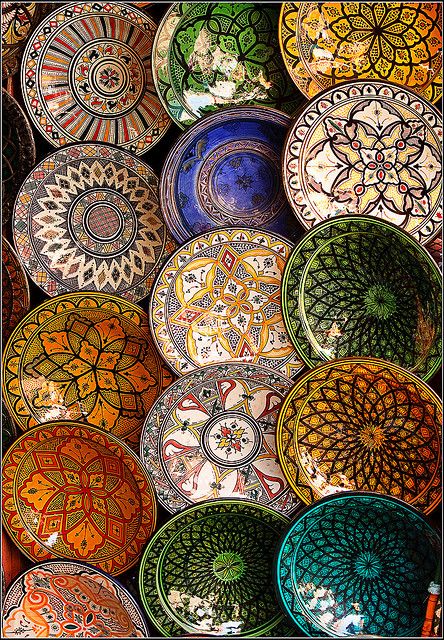
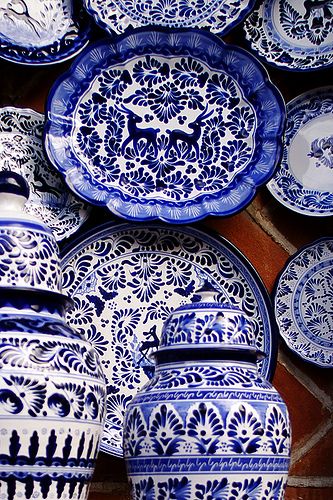
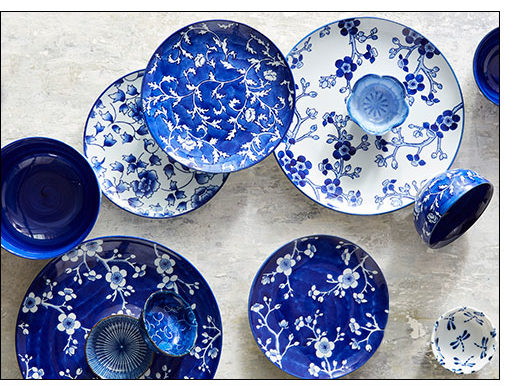
Top to Bottom
Chinese Ginger Jars (shop similar inspired ones here from Ballard Designs) // Japanese Handpainted Bowls // Display of English collector’s plates depicting various scenes // The Hermés Bleus d’Ailleurs Collection // Moroccan designs at a Souk // Mexican Talavera designs // TRICK! The Japanese Garden Dinnerware set at Williams Sonoma (They are cute though!)



